John Feehan leans proudly against a wooden post on the veranda of his cottage in Elrington Street, Braidwood. He can't wait to show me around his historic digs, and not only for its close connection to his family roots, but also its extraordinary link to an event firmly entrenched in Braidwood's bushranging folklore.
Bushranging in these parts is synonymous with the notorious Clarke Gang who terrorised the area, committing a long list of crimes in the mid-1860s before ring leaders, brothers Tommy and John, were eventually captured and hanged in 1867. Peter Smith, author of the authoritative The Clarke Gang: Outlawed, Outcast and Forgotten (Rosenberg 2015) labels the dastardly duo as "the worst and most troublesome bushrangers of all time". Yes, worse than even Ben Hall or Ned Kelly.
During the height of their reign of terror, the countryside around Braidwood was dotted with harbourers and sympathisers whose support for the Clarkes, according to Smith, "eclipsed all other gangs to elude the police". They provided places where the felons could lay low to avoid the law before their next raid.
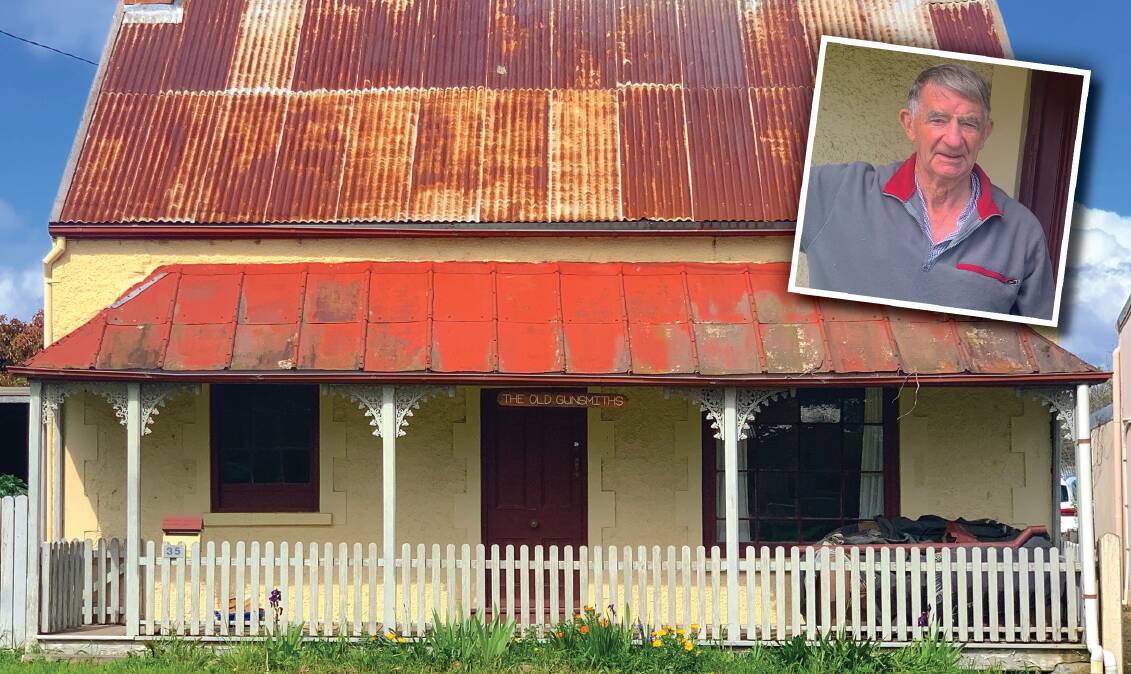
According to Feehan, his modest cottage was one of those places.
"One of the Clarkes married into the Gardiner family who ran the gunsmiths store out of this building," says Feehan as he ushers me inside the 150-plus-year-old two-storey wooden cottage.
"This is where the counter would have been," he explains as he points to a now carpeted floor in the loungeroom of the cottage, before turning to the window and declaring "and this is where the Gardiners would have displayed their latest weapons".
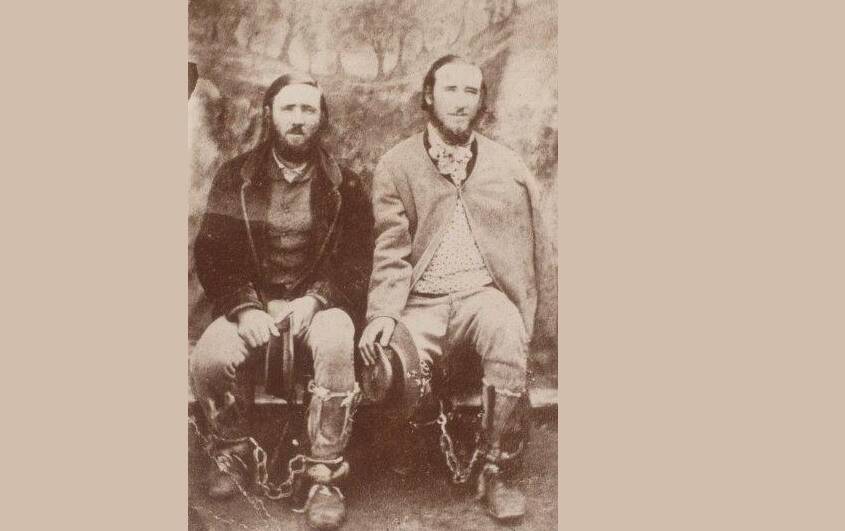
Feehan is in the final stages of preparing his cottage for new tenants, but I've accepted a rare opportunity for a peek inside, and it's not because I've acquired an obscure penchant for old shop layouts.
No, it's because I want to creep up the steep stairs to the location of a bushranging legend, that although due to the mists of time can't be confirmed, is one that according to Feehan is "so extraordinary in detail, it has to be true".
According to Feehan, one evening in the mid 1860s, one of the Clarkes (he isn't sure which one, but let's not let that ruin a good yarn) had tied up his horse at the back of the store and come in for his weapons to be fixed.
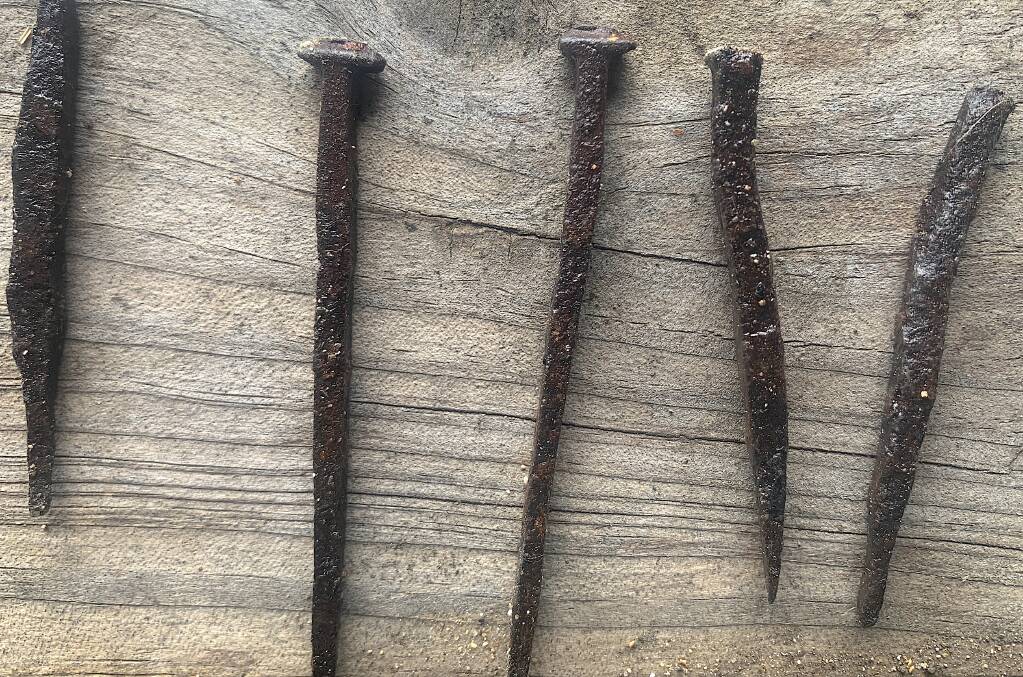
"Back in that era, weapons were made out of little better than mild steel, so they needed regular maintenance," says Feehan, whose grandmother moved into the house shortly after the gunsmiths left.
Apparently, the Clarke bunked down in the property overnight and in the morning while enjoying a cuppa in the kitchen, just before he was about leave, he was alarmed to hear a knock at the front door.
"Of all people to be the first customer - it was a policeman," reveals Feehan. "One of the Gardiners unlocked the door just here and let him in," he explains, showing me the original dead-bolt locks at the top of the door frame.
"He'd come to drop off or pick up weapons," explains Feehan.
According to Feehan, "the Clarke, having a cuppa in the next room was quickly (and quietly) warned and rushed up the stairs".
Feehan leads me through the kitchen and to rickety stairs that lead up to the second storey of the cottage.
Half-way up the steep stairs he stops and points to two coat hooks on the wall.
He presses his index finger up to his lips and very carefully manoeuvers the small wooden panel holding the coat rack, completely off the wall. It reveals a hidden cavity, just big enough for a man to crawl into!
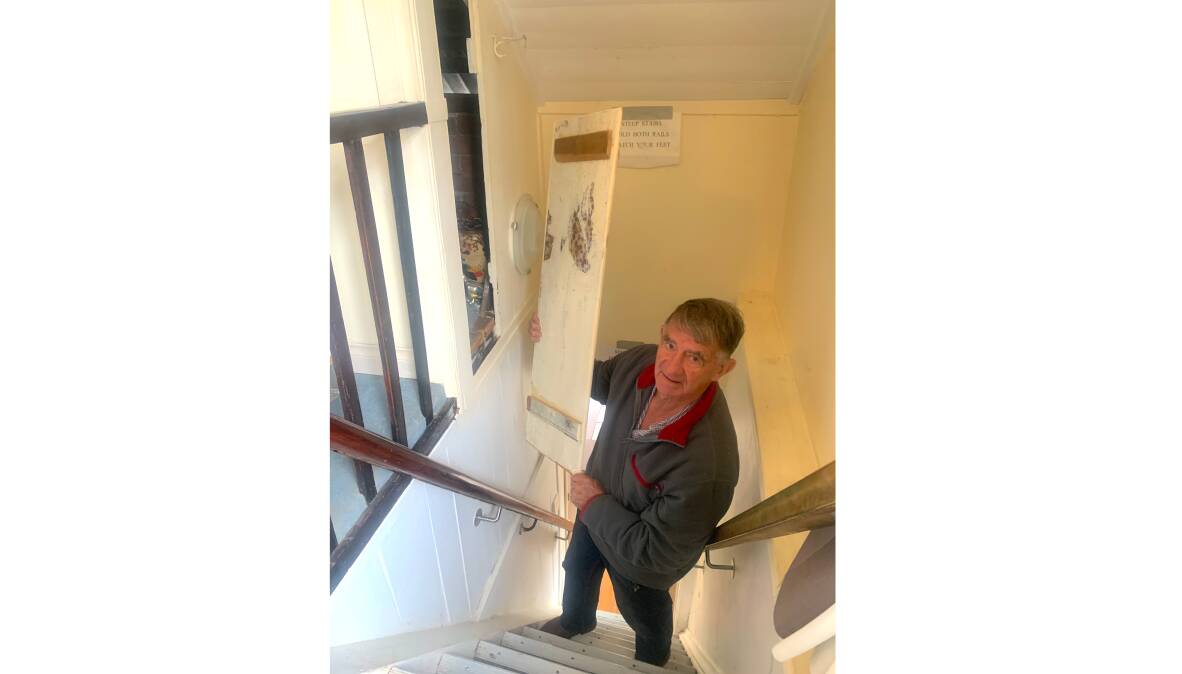
Still grasping the panel in his hands, which he has "gone to great lengths to retain in working order", he glances at me and proudly announces "it was in this very hidey hole that one of the Clarkes hid". Heck, what a yarn.
As to how much truth there is to the story, we may never know. "Back in that era, verbal communication was all that was needed, the story has simply been passed down from generation to generation," says Feehan.
No matter the story's veracity, the prospect that a bushranger hid out in a bolt-hole that's still in situ would be more than enough to keep the cottage in my family. However, when Feehan was recently considering selling the cottage, it wasn't the concealed cupboard that kept him from hammering a 'For Sale' sign into the front lawn. Rather, it was an innocuous find under the kitchen floorboards.
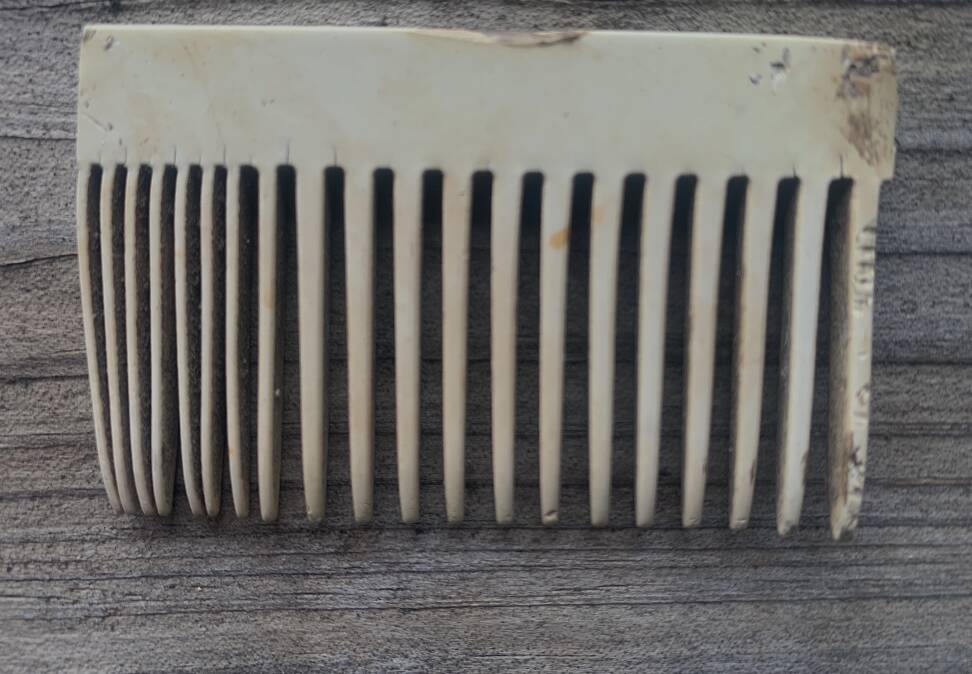
While sifting through "64 wheelbarrow loads of dirt" Feehan found various relics including an egg cup, original hand-made nails, and a snuff box. But it was a 6cm-long hair comb that made him change his mind.
"I thought to myself, my mother or grandmother may have used this very comb, and from then on, I just couldn't sell it," he says.
Do you have an old home with a secret hidey hole? If so, I'd love to hear from you.
Did You Know: Big rains like what we've experienced the last few months contributed to the demise of the Clarke brothers. According to bushranger aficionado Peter Smith, "The floods of early 1867 made it more difficult for the Clarkes to move around between their networks of harbourers and sympathises, and indeed they were seeking shelter when they eventually surrendered."
Lake George flooding
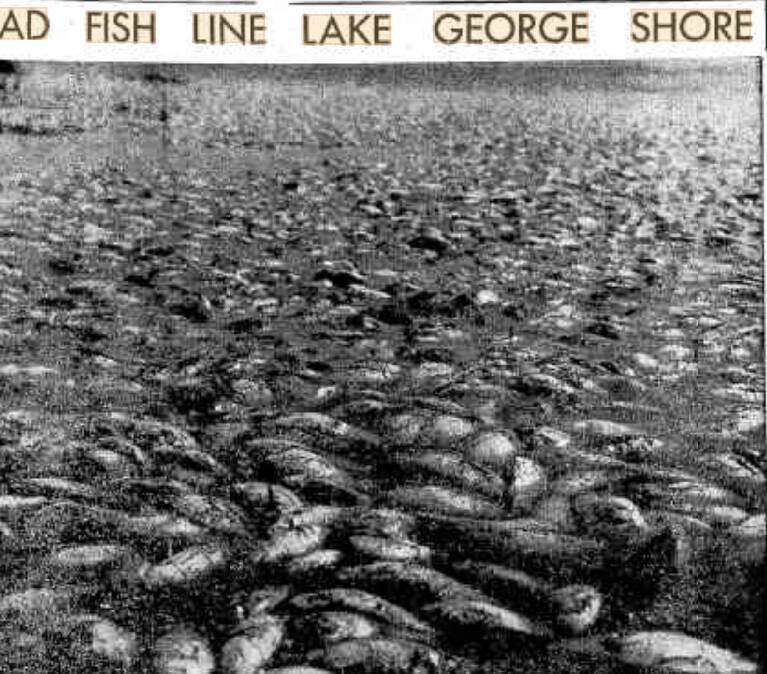
This column's recent deep dive into the murky waters of Lake George to check on its water levels prompted a bulging mailbag.
Several readers, including Geoff Smith of Kaleen, recalls the water not only lapping the edge of the highway (before it was raised and duplicated in the late 1990s), but also completely inundating it.
Alan Toohey's brother-in-law who now lives in Perth but worked and resided in the ACT in the 1960s-70s remembers flooding resulting in "the southbound lane being closed to traffic and a very slow crawl on the northbound lane". He also recalls on at least one occasion the lake got so high he "had to detour through Hall in order to get to Sydney".
Meanwhile, Laurie Laffan of O'Connor recalls riding past Lake George in 1962 on his Honda Dream motorcycle when "the shoreline was covered with thousands of dead redfin."
"You can only imagine the foul smell... I couldn't put the windows up". Gee, I bet.
Charles Body of Kaleen points out the Christmas Day 1962 edition of The Canberra Times even featured a photograph of the piles of dead fish that washed up on the lake's western shore. "I don't think anyone could explain the fish deaths although it was suggested that the lake had become too salty," he recalls. "Whatever the cause, the smell was memorable."

Charles also recalls in the mid-1960s when the northern edge of the lake was much closer to the highway than it is today. "There were always large numbers of pelicans at the northern end (never on other areas of the lake), but I haven't seen pelicans on the lake for many years." Well Charles, good news, I can report that I've spotted several pelicans on the lake in recent weeks, and not just at the northern section.
WHERE IN THE REGION?

Rating: Easy - Medium
Cryptic Clue: You'll probably pass this if you visit 'Frosty'
How to enter: Email your guess along with your name and address to tym@iinet.net.au The first correct email sent after 10am, Saturday December 17, wins a double pass to Dendy, the Home of Quality Cinema.
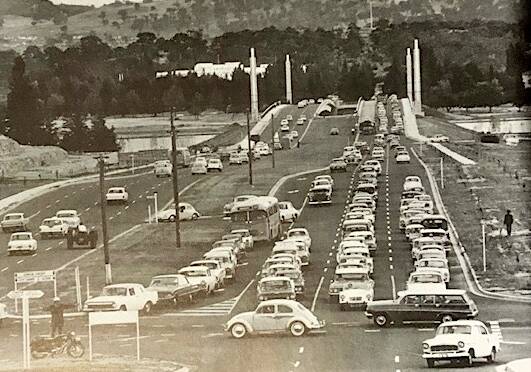
Last week: Congratulations to Chris Ryan of Kirrawee who was the first reader to correctly identify last week's photo as the "soon-to-be-remodelled-yet-again intersection of Commonwealth Avenue and London Circuit, with Commonwealth Avenue Bridge in the middle distance and Old Parliament House behind the trees".
Not content with just identifying the location, Chris also attempted to determine the date it was taken. "Judging by the vintage of the motor vehicles in the shot (including the black Triumph police motorcycle), I would put the period in the mid-1960s" he says, adding "the appearance in the photo of a number of EH Holdens, several FE and FC Holdens, together with the absence of the HD/HR Holden models (c.1966-1968) are telling factors." Chris is spot on - the photo was taken in 1965.
Many readers, including Leigh Palmer of Isaacs, were enamoured by the "lovely old AEC Reliance Canberra bus". Former bus driver Barry Snelson of Calwell reports his "first shift bus was one of these models, minus the side destination panel. Great old buses. Did you know that to stop the motor, you had to put the bus in first gear, clutch in, foot on brake and release the clutch, thus stalling the motor. Many drivers didn't have their foot on the brake hard enough and imagine the holes in the old Kingston Bus Depot Shed wall." Oh dear.
Meanwhile, several eagle-eyed readers were surprised to see the tractor chugging south across Commonwealth Avenue Bridge. "You don't see that these days," remarks Sue O'Leary of Campbell. No, you certainly don't, even though often at peak hour you barely move at tractor pace.
Finally, the photograph appears to have been taken from the top of City Hill with a telephoto lens, hence the hills on the southside of the lake appearing much closer than they do with the naked eye.
SPOTTED
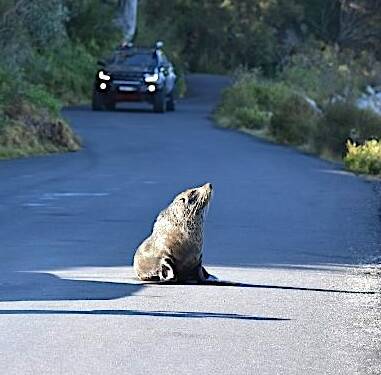
If you are planning a trip to the coast this holiday season, giant potholes aren't the only hazard to look out for on the roads.
Bruce Graham recently snapped this photo of a seal basking on a road in Narooma.
"The seals hang out wherever they like," he explains, adding, "many just float and swim near the rocks at the breakwall, otherwise bask on the rocks or on the road".
CONTACT TIM: Email: tym@iinet.net.au or Twitter: @TimYowie or write c/- The Canberra Times, GPO Box 606, Civic, ACT, 2601.
We've made it a whole lot easier for you to have your say. Our new comment platform requires only one log-in to access articles and to join the discussion on The Canberra Times website. Find out how to register so you can enjoy civil, friendly and engaging discussions. See our moderation policy here.







